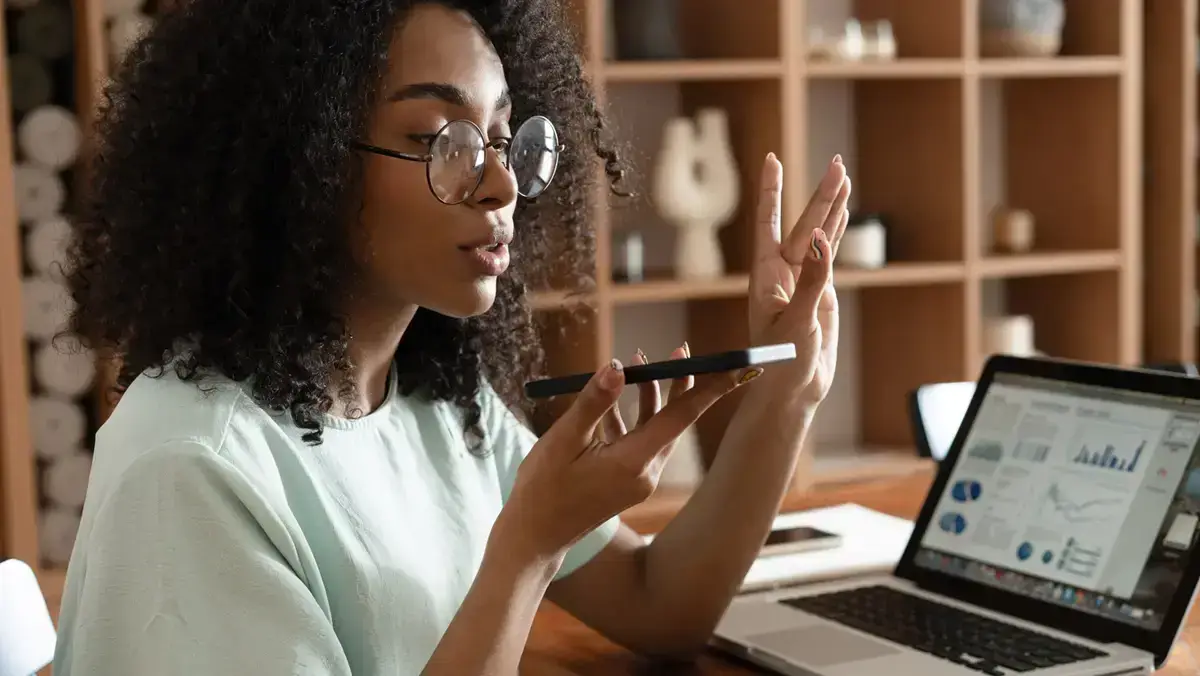What is Accessibility-First Web Design?
Jan 20, 2025 • 5 Minute Read • Ari Moros, Senior Visual Designer


New technologies and devices will play an important role in delivering inclusive experiences in the years ahead. From wearables to voice assistants to screen readers, device accessibility has gone far beyond what phones and tablets alone can deliver.
With consumer brands like Apple set to release augmented reality glasses and other innovative devices on the way, it’s more important than ever to capitalize on advancements in inclusive technology. Simply building your digital experiences to support traditional interfaces isn’t enough.
By getting ahead of universal design trends and advancements in accessible technology, you can make your experiences more inclusive no matter which devices individual users prefer.
The main focus when planning and designing for screen reader accessibility is to ensure any and all content exists for a purpose, in an order that makes cognitive sense. In many cases, this means taking a minimalist approach where simplified navigation and intuitive form fields can be scanned more easily and translated efficiently to blind users.
According to one study, a “minimalist design has the effect of generating designs containing visually less-complex pages, but deeper navigation, with fewer items on the same webpage. This new trend alters the old navigational design pattern, which was shallower and with more items on one web page.”
Proper use of ARIA (Accessible Rich Internet Applications) tags and other coding best practices are essential for universal design that supports screen readers. With ARIA landmarks, you get a variety of tags that can identify common sections of digital experiences and ensure content is delivered to blind users and others with cognitive disabilities. And by tagging navigation and heading tags correctly you are empowering users who use screen readers to navigate to different pages or different sections of a page more easily, rather than forcing them to listen to everything on a page before deciding if the content is relevant to them.
As digital experiences become increasingly feature-rich, simplistic yet intuitive and functional designs will be essential to serve disabled users with screen users. Not only that, but these kinds of inclusive designs will improve task completion times and performance for users across all devices and experiences.
New solutions are emerging today that will impact the screen reader experience in the years ahead - particularly with respect to how they integrate or align with virtual assistants. Both of these technologies are widely adopted by users with disabilities – but the potential implications of the impact when they are integrated are exciting. Researchers from the University of Waterloo and the University of Washington have developed a tool called VERSE that joins these technologies to dramatically improve internet browsing for people with visual impairments.
In October 2019 two hikers in New Jersey were injured while trying to find a way off of the mountain as the sun went down. After sliding down a steep incline, they landed hard on a ledge. With injuries, diminishing light, and no solutions, they were facing some unpleasant realities. As they tried to figure out their next move, one of the hikers heard "911, what's your emergency" from his Apple Watch. Thankfully, the hiker had elected to enable the fall detection feature. According to Apple, if the Apple Watches Series 4 or later detects a hard fall, it can help connect you to emergency services if needed.
Beyond safety considerations, wearable, connected technologies will increasingly enable accessibility and foster independence for people with disabilities.
A recent research article from Kenneth Goughnour, Paul MA Baker and Nathan W Moon for the Journal of Rehabilitation & Assistive Technologies Engineering articulates that "while wearables offer great benefits to all, people with disabilities stand to benefit considerably from connected technologies. The tools used to build smarter cities and smarter homes can help create a more accessible environment for people with disabilities, and most importantly, offer them the opportunity to live more independently."
In the next year, as much as 30% of web browsing will be done without screens. While this trend applies to all web users, it is especially important for those with visual impairments or who have trouble using a mouse and keyboard to navigate digital experiences. This trend has created a pressing need to optimize websites, technologies, and applications for more efficient voice search and navigation.
Users have always searched with a question in mind, and with the rise of voice search, more and more people are explicitly asking those questions. Every web page on your site is a potential answer to those questions, so it's important that each page has a purpose and is optimized to provide valuable info to all users, regardless of abilities.
"Five years ago, Alexa would have definitely been an accessibility product." - Alexandra Barcelona, Director of Marketing, dotCMS
Voice-activated devices remove the need for a keyboard or touch screen to enter requests or consume content, which has proven to be helpful to those users with limited mobility or dexterity.
As a proof point, Apple had added accessibility to the “setup buddy” experience. When someone sets up a new iPhone or other device for the first time, the system will prompt them to configure any desired accessibility features such as VoiceOver, which enables users with visual disabilities to control their computer using a rich set of keyboard commands and gestures.
As sentiment analysis and natural language processing improve in the near future, you will also see voice-enabled technologies providing support to people with emotional disabilities by connecting them with help or providing advice.
To optimize your website for voice operation, keep these three principles in mind:
These are just some of the technologies that will be making waves in the accessibility space. To learn more about accessible technologies, as well as optimizing your website and mobile experiences for accessibility, read our whitepaper on designing to meet ADA accessibility standards.
